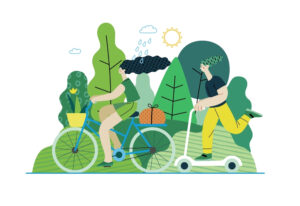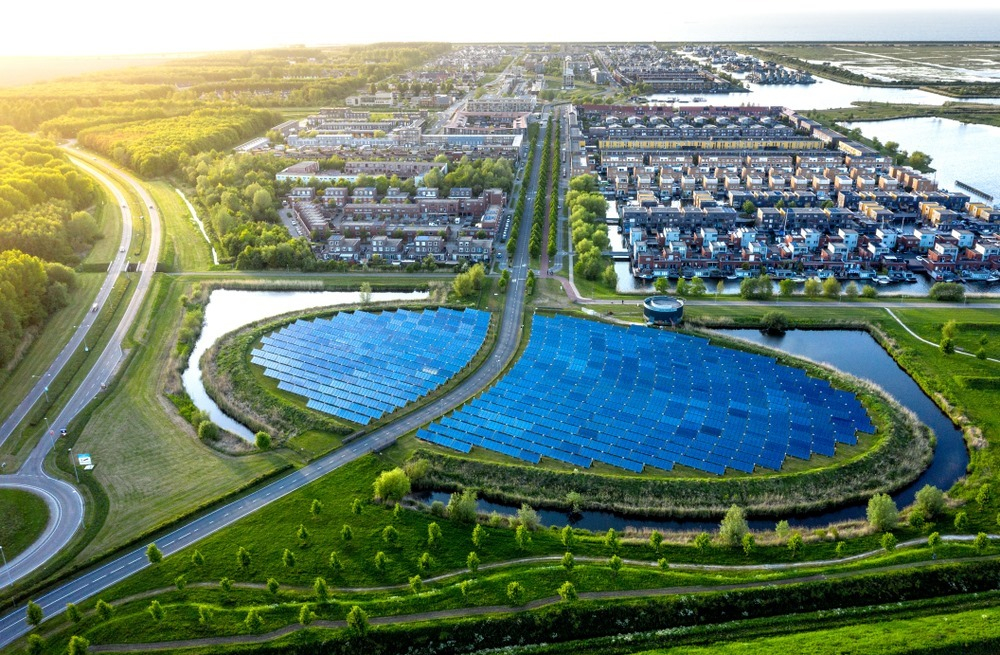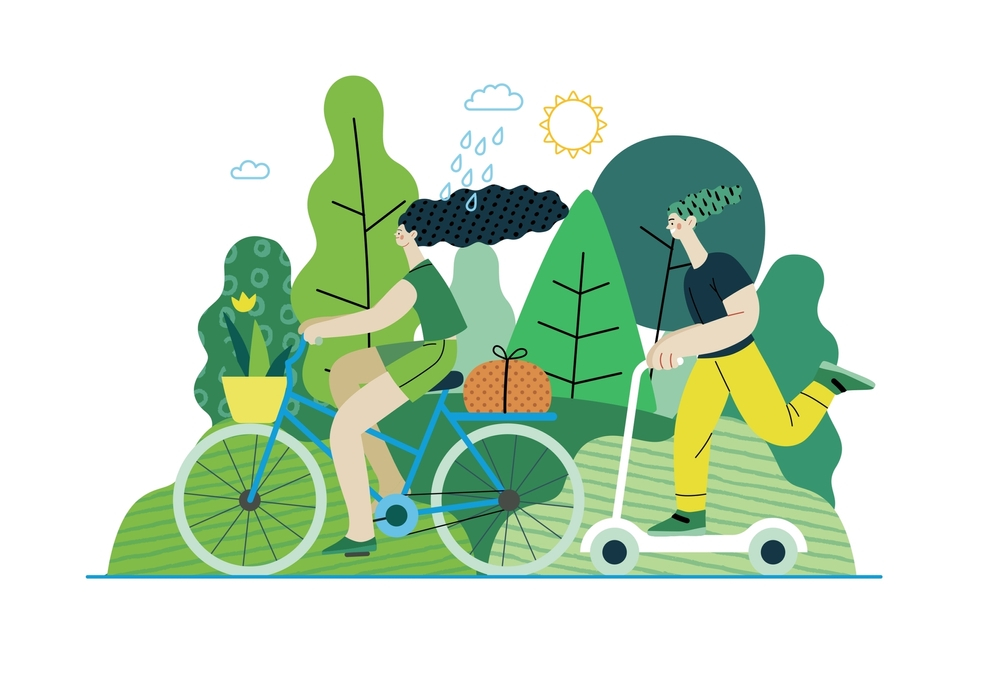Introduction:

The global trend of urbanization, often viewed as a threat to biodiversity, reveals an unexpected paradox. Despite the concrete expanses of cities, they surprisingly host a richer diversity of flowering plants. This phenomenon is attributed to the cultivation of agricultural crops within urban environments, sparking curiosity and paving the way for a groundbreaking study led by the University of Gottingen.
Urbanization’s Impact on Seasonal Dynamics:
As urban areas continue to expand, the research sheds light on the intensification of seasonal disparities within plant-pollinator networks. The investigation encompasses 36 vegetable-producing farms in Bengaluru, meticulously examining the intricate interplay between plants and pollinators in both urban and rural cultivation landscapes.
Methodology:
This year-long exploration takes a comprehensive approach, with farms strategically distributed along routes from the bustling city center to serene rural villages. The study covers unique local seasons, including the mild-dry winter, hot-dry summer, and the transformative rainy monsoon. Researchers delve into factors such as the temporal aspect, proximity to the city center, and the extent of urbanization, assessing sealed surfaces like roads, buildings, or pavements.
Seasonal Dynamics Unveiled:
The outcomes, detailed in the esteemed journal Ecology Letters, unveil substantial fluctuations in plant-pollinator networks throughout the seasons. Beyond a mere documentation of patterns, the research underscores the pivotal role of seasonality, an often underestimated factor, in steering the intricate dance of interactions between plants and their pollinators. This revelation gains particular significance in rapidly expanding tropical megacities dealing with distinct ecological, climatic, and social dynamics.
Insights from Lead Researcher:
Dr. Gabriel Marcacci, the primary architect of this groundbreaking study and currently a postdoctoral researcher at the esteemed Swiss Ornithological Institute and the University of Neuchâtel, emphasizes the revolutionary nature of the findings. In his perspective, recognizing the imperative of a nuanced understanding of urbanization’s impact on tropical plant-pollinator dynamics becomes paramount. This recognition holds heightened importance in the face of burgeoning urban expansions, particularly in tropical regions, necessitating informed and ecologically sensitive management.
Concluding Perspectives:
Co-authors, including the distinguished Professors Catrin Westphal and Teja Tscharntke from the University of Göttingen, in collaboration with insightful Ingo Grass from the University of Hohenheim, underscore the significance of acknowledging and understanding substantial shifts in plant-pollinator networks throughout the year. The often underestimated role of seasonality in the intricate interactions within rapidly growing tropical megacities takes center stage. This research, conducted as part of a comprehensive DFG research group, not only contributes to the expanding body of ecological knowledge but offers valuable insights into the intricate socio-ecological systems at the interface of urban and rural landscapes in India.
Bridging the Gap: Implications for Urban Ecology
This groundbreaking study not only advances our understanding of plant-pollinator dynamics in urban environments but also carries profound implications for urban ecology. The unexpected floral richness discovered within cities challenges traditional notions, prompting a reevaluation of our understanding of urban ecosystems and the imperative for adopting nuanced ecological management strategies in urban planning. The study’s findings defy stereotypes, portraying urban areas as dynamic ecosystems capable of sustaining rich biodiversity. This prompts a call for integrated urban planning approaches that harmonize human activities with ecological processes, emphasizing green spaces, biodiversity corridors, and sustainable landscaping practices. Moreover, the study urges educational initiatives to deepen ecological understanding among urban dwellers and highlights the need for ecologically conscious policies to mitigate the environmental impact of urbanization, fostering resilient, sustainable, and ecologically vibrant urban futures.
Future Directions: Navigating the Urban-Rural Interface
As urbanization continues its global trajectory, the study prompts reflection on future directions. Balancing urban expansion with ecological sustainability becomes paramount, calling for collaborative efforts between researchers, policymakers, and urban planners. Navigating the urban-rural interface requires innovative solutions that prioritize biodiversity while accommodating the needs of expanding urban populations.

Educational Outreach: Bridging Knowledge Gaps
Beyond academic circles, the study’s findings carry implications for educational initiatives. Bridging the knowledge gap between ecological complexities and public understanding becomes a priority. The responsibility extends to disseminating information about the intricate relationships between urbanization, seasonal dynamics, and plant-pollinator networks, fostering environmental literacy within communities.
Policy Considerations: Integrating Ecology into Urban Planning
Incorporating ecological insights into urban planning frameworks emerges as a crucial consideration. As cities evolve, policies should strive to preserve and enhance biodiversity, recognizing the role of urban green spaces and sustainable practices in maintaining healthy plant-pollinator networks. The study’s outcomes should serve as a catalyst for policy discussions centered on integrating ecology into urban development strategies.
Collaborative Research Initiatives: Advancing Urban Ecology
The interdisciplinary nature of this study underscores the paramount importance of collaborative research initiatives, particularly within the realm of urban ecology. Future endeavors should actively champion and facilitate partnerships between ecologists, urban planners, and policymakers to cultivate a holistic approach to understanding and addressing ecological dynamics in urban environments. By fostering collaborations, this collective effort seeks to amplify the ecological discourse, acknowledging the intricate connections between urbanization and biodiversity. Pooling resources and expertise allows for a more comprehensive exploration of the complex relationships that shape urban ecology, laying the groundwork for informed decision-making and sustainable practices in urban planning. Through this integrated and ecologically conscious approach, the study envisions a future where urban development harmonizes with ecological principles, ensuring the resilience and vitality of urban ecosystems.
Conclusion:
In conclusion, this groundbreaking study stands as an intellectual cornerstone, deftly unraveling the enigma of urban floral diversity and propelling us into the heart of a more expansive discourse on urban ecology. Beyond the immediate revelations about plant-pollinator networks, the study’s ramifications extend into multiple dimensions, charting a course for comprehensive explorations into the multifaceted interactions within urban ecosystems. The profound insights garnered from this research unfurl like tendrils, reaching into the realms of seasonal dynamics, educational outreach initiatives, and critical policy considerations. As we navigate the intricate web woven by the forces of urbanization and ecological sustainability, this study emerges not merely as a scientific endeavor but as a guiding beacon, urging a fundamental reconsideration of our approach to urban development and harmonious coexistence with the natural world. The implications of this research beckon us to forge a path that intertwines progress with ecological sensitivity, envisioning a future where urban landscapes flourish in tandem with the principles of sustainable biodiversity.
Related Topics
- At COP28, over 60 countries commit to reducing cooling-related emissions – Micro2media.com
- Artificial tree’ from Switzerland to produce green hydrogen – Micro2media.com
- An urban planner and an urban ecologist walk into a bar. How “ecology” could play role in planning
- Global inequities in population exposure to urban greenspaces increased amidst tree and nontree vegetation cover expansion | Communications Earth & Environment
